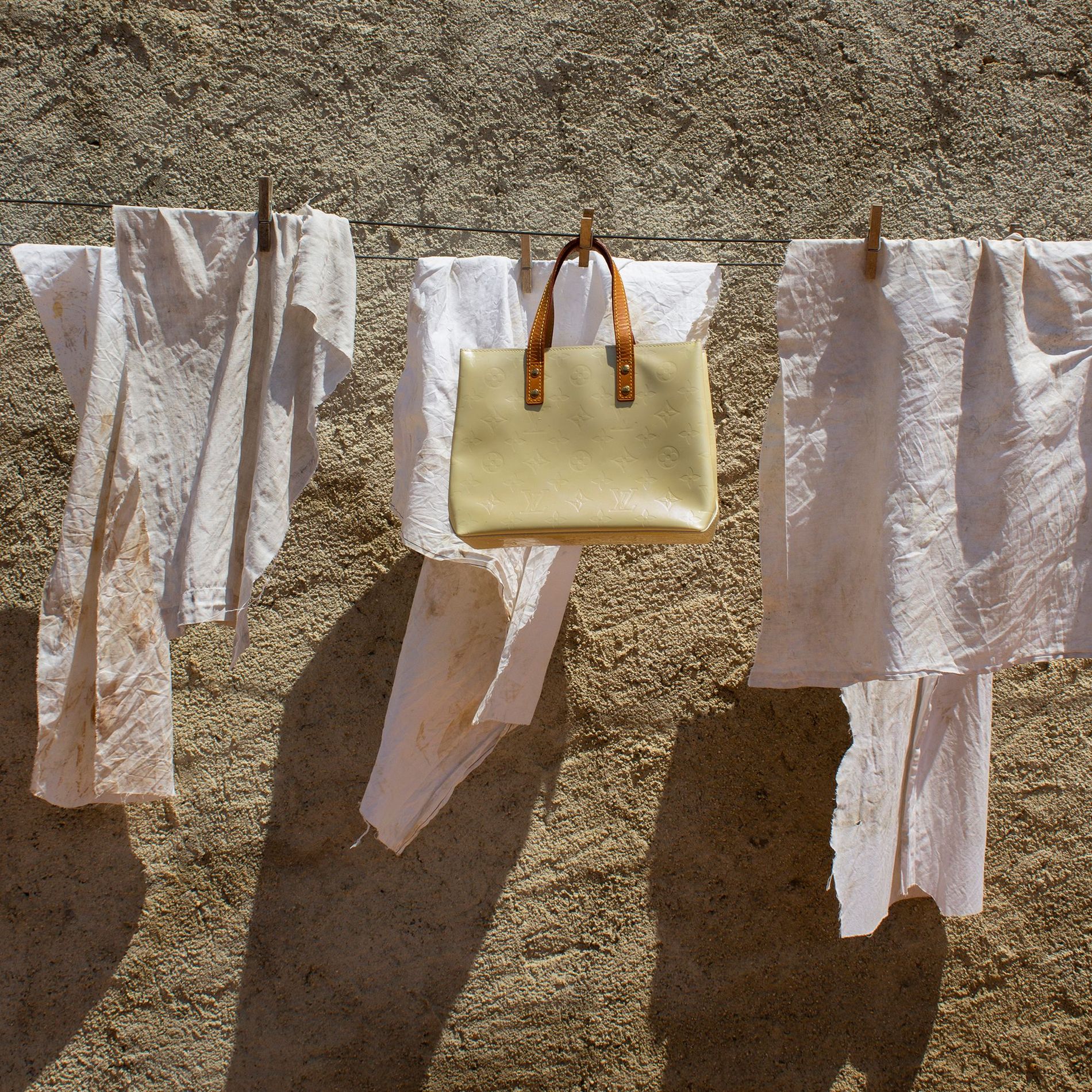According to the experts, we should all be spending far less time in our laundries
Are you doing too much laundry? Probably – and it’s not just your time that you could be saving. Over-washing our clothes is a sustainability issue that’s often not discussed, but garment care is actually responsible for a significant amount of an item’s carbon footprint over the course of its life. In fact, a study by Levi’s found that for its iconic 501 jeans, the consumer care phase – i.e. washing and drying – was responsible for 37 per cent of its carbon footprint, as well as 23 per cent of total water consumption.
“Changing our home laundry routine is one of the biggest opportunities for resource conservation,” Paul Dillinger, Levi’s vice president, global head of product innovation, tells Vogue. “It’s also an incredibly easy solution: we’re just asking people to not do their laundry.”
But how often should we actually be washing our clothes? Levi’s recommends that its customers wash their jeans after every 10 wears. “The average Chinese consumer washes their jeans after about four wears. In the UK and France, the average drops to 2.5 wears between washing. In the United States, it’s about a 2.3 wear/wash ratio,” Dillinger continues. Shifting from washing your jeans every 2.5 wears to every 10 wears would reduce the carbon footprint of the consumer phase by 75 per cent.
Changing our home laundry routine is one of the biggest opportunities for resource conservation
Paul Dillinger, Levi’s vice president, global head of product innovation,
It’s not just our jeans that we’re over-washing, though. “Wool garments are probably most frequently over-washed,” Dr Kyle Grant, CEO of Oxwash, an eco-friendly laundry company and dry cleaning alternative, says. “Wool has some unique characteristics that contribute to its ability to resist dirt and odour – it can be spot cleaned, aired and/or steamed with an iron to get the shape back.” Oxwash recommends washing wool jumpers after every five wears, while some knitwear experts say that we can actually get away with washing our jumpers just at the end of every season.
Bras are also often over-laundered – Grant suggests hand-washing them after every two or three wears. Meanwhile, dresses should be washed after every one to three wears, shirts after every one to two wears, and T-shirts after every wear. “Some fibres such as cotton should be washed with stronger detergents and higher heat for the dirt to release, [although] most of us rarely get our clothes dirty enough to need higher temperatures,” Grant continues.
It’s not just energy and water that can be saved by reducing the amount we wash our clothes – it means that our garments last for longer, too. “Over-washing contributes to shrinkage, colour fading and quicker deterioration of clothes,” Dr Sonali Diddi, associate professor at Colorado State University’s department of design and merchandising, says. “With decrease in quality of clothing manufacturing and over-laundering, more clothes end up in landfill quicker.”

Photo: Zoe Ghertner
As well as reducing the frequency of our laundry loads, washing at low temperatures (20 to 30 degrees Celsius is the recommendation), air drying instead of tumble-drying, and using eco-friendly detergent is also better for the planet. “Many laundry detergents contain chemicals, such as phosphates, surfactants, and optical brighteners, which can be harmful to aquatic life when they enter waterways through wastewater discharge,” Grant explains.
Last but not least, microplastics – tiny plastic particles that are released into our waterways when synthetic clothing (such as polyester and nylon) is washed – are another major concern when it comes to laundry. Investing in a microplastics filter, such as a Guppyfriend bag or a Cora ball, can help tackle the issue, while synthetic clothing should be avoided where possible.
While laundry may be a chore for many of us, simple changes can actually make a significant impact when it comes to our environmental footprint – and reduce the amount of clothes we get through. “Beyond the energy savings, carbon reduction, and water conservation, changing the way we do laundry is just better for our clothes,” Dillinger concludes.
Originally published on British Vogue.
